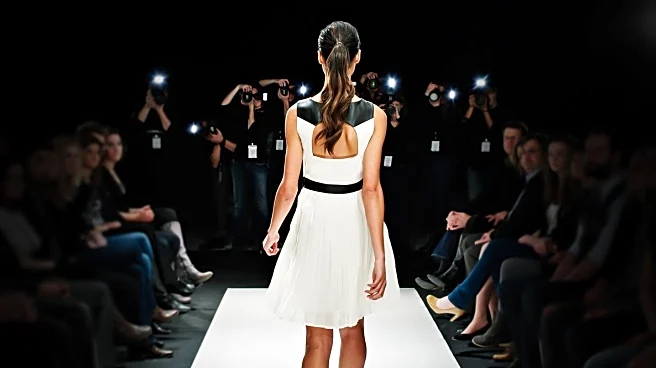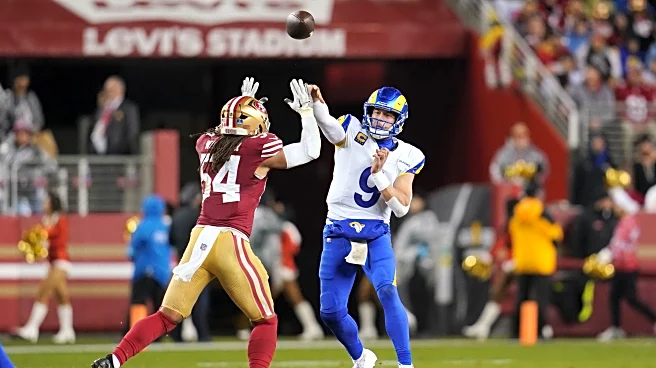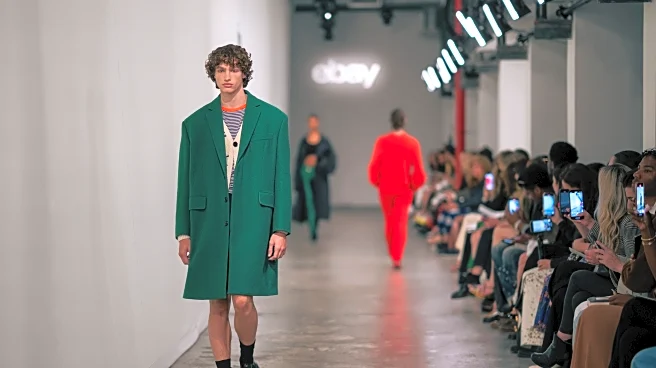What's Happening?
The fashion industry is witnessing a surge in secondhand shopping, driven by online platforms that offer digital upgrades such as livestream shopping and AI-powered search features. This trend is highlighted by eBay's secondhand runway shows in New York and London, where models showcase pre-loved designer pieces available for live purchase. According to Alexis Hoopes, eBay's vice president of fashion, secondhand items constitute 40% of the company's sales. However, experts caution that while secondhand shopping is more sustainable than buying new, it can still lead to overconsumption and increased textile waste. Meital Peleg Mizrachi, a postdoctoral fellow at Yale University, notes that secondhand buyers often purchase more clothing and dispose of it faster than those who buy new, contributing to textile waste. The online resale market, including platforms like ThredUp and The RealReal, is expanding rapidly, but it also generates emissions from shipping and packaging.
Why It's Important?
The shift towards secondhand shopping reflects a growing consumer awareness of sustainability in fashion. This trend has significant implications for the fashion industry, as it challenges the fast-fashion model that promotes constant consumption. By prioritizing quality and longevity over trend cycles, consumers can reduce their environmental impact. However, the rise of online resale platforms also presents challenges, such as increased emissions and the potential for overconsumption. Fashion experts emphasize the need for responsible shopping practices, including investing in durable, natural fabrics and maintaining garments to extend their lifecycle. This movement towards sustainable fashion could drive industry changes, encouraging brands to adopt more eco-friendly practices and recycling programs.
What's Next?
As the secondhand market continues to grow, fashion brands may increasingly adopt recycling and take-back programs to align with consumer demand for sustainability. eBay's partnership with Marks & Spencer for a take-back program is an example of such initiatives. Additionally, consumers are encouraged to change their shopping habits to make overconsumption unprofitable, thereby pushing fashion companies to alter their business models. The focus on sustainability may lead to more collaborations between brands and resale platforms, further integrating secondhand shopping into mainstream fashion.
Beyond the Headlines
The rise of secondhand shopping highlights broader cultural shifts towards sustainability and ethical consumption. It challenges the fast-fashion industry's reliance on overproduction and waste, promoting a more mindful approach to fashion. This trend also raises ethical considerations regarding the disposal of clothing, as much of it ends up in landfills or is exported to countries in the Global South. By fostering a culture of responsible consumption, the fashion industry can contribute to addressing the climate crisis and promoting social justice.












